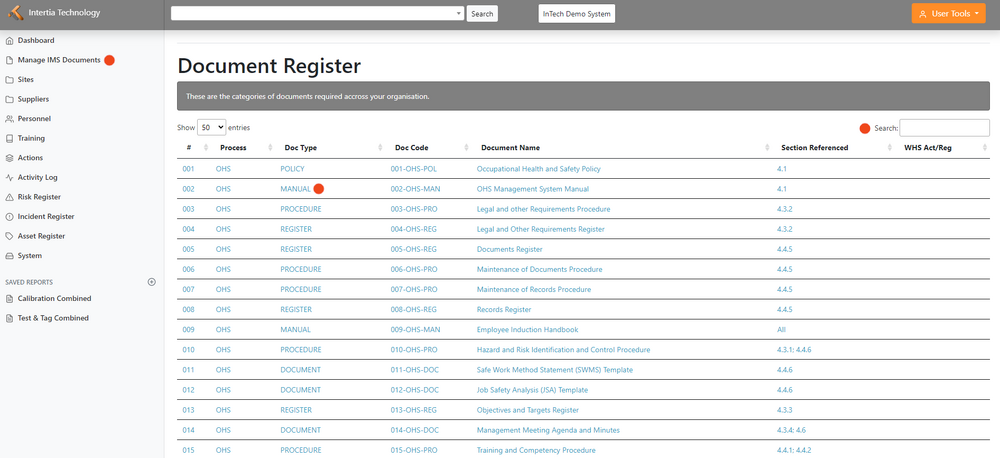Manage IMS Documents: Difference between revisions
Jump to navigation
Jump to search
No edit summary |
|||
| Line 9: | Line 9: | ||
=Document Management Tips= | =Document Management Tips= | ||
===Establish a Document Management System=== | |||
*Create a structured system for organizing and categorizing your documents. Use a consistent naming convention and folder structure that is intuitive and easy to understand. This will make it easier to locate and retrieve documents when needed. | |||
===Centralize Document Storage=== | |||
*Store all your documents in a centralized location, such as a cloud-based document management system or a shared network drive. This ensures that everyone in the organization has access to the latest versions of documents and reduces the risk of data loss. | |||
===Implement Version Control=== | |||
*Maintain control over document versions by implementing version control mechanisms. Use clear version numbers or dates to track revisions and updates. This helps to avoid confusion and ensures that users are working with the most up-to-date information. | |||
===Use Metadata and Tags=== | |||
*Apply metadata and tags to documents to enhance searchability and categorization. Metadata can include information like document type, author, creation date, and keywords. Tags allow for flexible categorization based on specific attributes or topics. | |||
===Implement Document Indexing=== | |||
*Create an index or table of contents for larger documents or document sets. This makes it easier to navigate through lengthy documents and locate specific sections quickly. | |||
===Regularly Review and Update=== | |||
*Schedule regular reviews of your documents to ensure they remain accurate, relevant, and up to date. Remove obsolete or outdated documents to declutter your document management system. | |||
Revision as of 03:34, 28 May 2023
Accessing IMS Documents
- IMS Documents home page is categorized based on document number, process, document type, document code, document name, section referenced, and WHS Act/Reg.
- Search for a specific document: If you need to find a specific document, use the search box located on the top right portion of the page. Enter a keyword or document number, and the system will provide a list of relevant documents that match your search criteria.
Creating and Modifying IMS Documents
- Click on a document to view it: Once you have located the document you need, click on the document name to view it. The document will open in a new window where you can read it, download it, or print it.
Document Management Tips
Establish a Document Management System
- Create a structured system for organizing and categorizing your documents. Use a consistent naming convention and folder structure that is intuitive and easy to understand. This will make it easier to locate and retrieve documents when needed.
Centralize Document Storage
- Store all your documents in a centralized location, such as a cloud-based document management system or a shared network drive. This ensures that everyone in the organization has access to the latest versions of documents and reduces the risk of data loss.
Implement Version Control
- Maintain control over document versions by implementing version control mechanisms. Use clear version numbers or dates to track revisions and updates. This helps to avoid confusion and ensures that users are working with the most up-to-date information.
Use Metadata and Tags
- Apply metadata and tags to documents to enhance searchability and categorization. Metadata can include information like document type, author, creation date, and keywords. Tags allow for flexible categorization based on specific attributes or topics.
Implement Document Indexing
- Create an index or table of contents for larger documents or document sets. This makes it easier to navigate through lengthy documents and locate specific sections quickly.
Regularly Review and Update
- Schedule regular reviews of your documents to ensure they remain accurate, relevant, and up to date. Remove obsolete or outdated documents to declutter your document management system.
